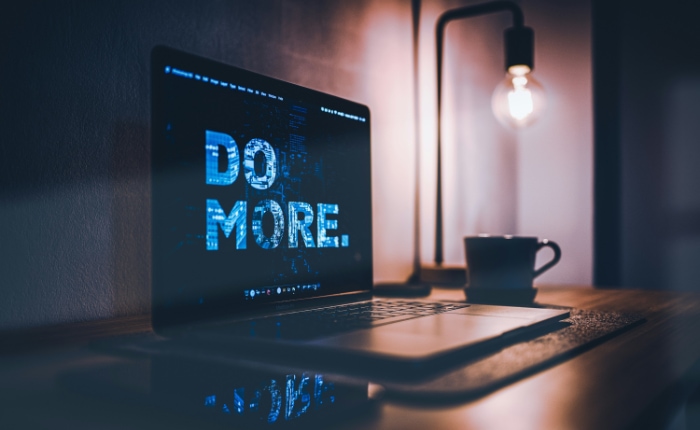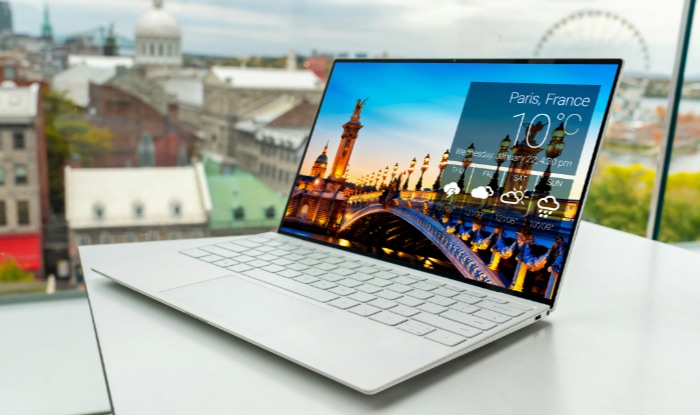Difference Between Wallpaper and Screensaver

Personalizing your computing device goes beyond just a matter of preference; it reflects your individual style and can significantly enhance your interaction with technology. Wallpapers and screensavers stand as two central pillars of digital personalization, each playing a unique role in how we experience our devices.
While both may seem to serve a purely aesthetic function at first glance, a deeper exploration reveals that they hold distinct purposes and effects on user experience and device performance.
What is Wallpaper?
Wallpaper on a computing device is akin to the paint or decorations adorning the walls of a room; it's one of the first things noticed upon entry and sets the tone for your digital space. Wallpapers are images displayed on the desktop background of your computer, smartphone, or tablet.
They play a significant role in personalizing your device, allowing you to express your style or current mood through visuals.
Types of Wallpapers
Wallpapers come in various formats, each offering a different visual experience:
- Static Wallpapers: These are standard, non-moving images that range from personal photographs to digital art. Static wallpapers are the most common type, known for their simplicity and minimal impact on device performance.
- Dynamic Wallpapers: This type changes based on certain conditions, such as the time of day. Dynamic wallpapers can offer a more interactive experience, subtly shifting as external factors change.
- Live Wallpapers: Exclusive to smartphones and tablets, live wallpapers incorporate animations or interactive elements that respond to touch or device movements. While visually appealing, they can consume more battery power and resources.
Impact on User Experience and Device Performance
Choosing the right wallpaper can greatly enhance your daily interaction with your device. A well-chosen image can boost your mood, increase productivity, or simply provide a pleasing backdrop during use.
However, it's important to consider the impact on device performance. Static wallpapers are lightweight and have negligible effects on system resources.
In contrast, live or dynamic wallpapers, with their animations and constant changes, can consume more battery and processing power, potentially affecting your device's overall performance.
Personalizing Your Digital Environment
Wallpapers offer a straightforward yet powerful way to personalize your computing environment. With an almost endless selection of images available online or the option to use personal photos, the opportunity to make your device uniquely yours is limitless.
Experimenting with different types of wallpapers can also provide a refreshing change, keeping your digital experience vibrant and tailored to your evolving tastes.
What is a Screensaver?
Originally, screensavers were designed as a practical solution to a technical problem, but over time, they have evolved into a dynamic form of digital art and personal expression. Screensavers are animated images or sequences of images that appear on your screen when your computer or mobile device is not in use for a predetermined period.
They were initially developed to prevent image burn-in on older CRT and plasma displays, a concern that is largely obsolete with today's advanced screen technology. Despite this, screensavers have retained their popularity, now serving more as entertainment or a way to convey personal interests and aesthetics.
Historical Context and Original Purpose
The inception of screensavers dates back to the era of early computing, where the prolonged display of static images led to the permanent etching of those images onto the screen, known as burn-in. Screensavers were the solution, keeping the screen active with moving visuals to prevent any single image from staying on the screen too long.
This practical utility has since transformed, with modern displays being less susceptible to burn-in, allowing screensavers to evolve into a more aesthetic feature.
Evolution and Aesthetic Accessory
As technology advanced, the functional need for screensavers diminished, but their popularity did not wane. Instead, screensavers became a canvas for creativity and personalization, showcasing everything from family photos to sophisticated 3D animations and interactive environments.
They offer a glimpse into the user's personality or interests, often becoming a conversation starter in both personal and professional settings.
Variety in Screensaver Designs
The range of screensaver designs is vast, encompassing simple patterns, natural landscapes, cosmic simulations, and much more. Developers and artists continue to push the boundaries, creating screensavers that can display real-time information, such as news feeds, weather updates, and social media notifications, blending functionality with visual appeal.
Screensavers Today: Beyond Aesthetics
While their original purpose may be obsolete, screensavers now play a unique role in the digital experience. They can transform idle screens into lively displays of art, personal mementos, or gateways to interactive experiences.
Additionally, with the rise of digital well-being, screensavers can serve as a gentle reminder to take breaks, indicating periods of inactivity that might suggest it's time to step away from the screen and rest.
Key Differences Between Wallpaper and Screensaver

While both wallpapers and screensavers add a personal touch to your digital devices, they serve distinct purposes and have different impacts on how you interact with technology.
Functionality and Purpose
The primary function of wallpaper is to decorate the desktop background of your device. It remains visible whenever your device is on and not covered by open applications.
Wallpapers provide a constant backdrop to your digital workspace or personal device, allowing for a static or semi-static form of personal expression.
Screensavers, on the other hand, are designed to activate when your device is idle – typically after a predefined period of inactivity. Originally intended to prevent screen burn-in, screensavers now serve more as a form of digital art or entertainment, temporarily transforming idle screens into dynamic displays.
Activation: Continuous Display vs. Activation During Inactivity
Wallpapers are always visible unless obscured by open windows or applications, providing a constant visual environment for the user. This continuous display means that your choice of wallpaper can significantly influence your mood and productivity throughout the day.
Screensavers activate automatically after a period of inactivity, taking over the screen to offer a brief visual respite or to entertain. They disappear once activity resumes, making them transient compared to the permanence of wallpapers.
User Interaction and Customization Options
Wallpapers offer a high degree of customization with minimal interaction. Users can easily change their wallpapers to reflect their current mood, interest, or aesthetic preference, with changes being as frequent or infrequent as desired.
Screensavers also allow for customization but may offer more interactive options depending on their design. Some screensavers allow user interaction, such as setting preferences for display content or interacting with the screensaver itself through mouse movements or clicks.
Resource Usage and Impact on Device Performance
The impact on device performance and resource usage varies between wallpapers and screensavers. Static wallpapers have minimal impact on system resources, whereas dynamic or live wallpapers can consume more power and processing capacity.
Screensavers can also vary in their resource usage, with simple animations having minimal impact and more complex, interactive screensavers potentially using more processing power and energy. However, since screensavers only run when the device is idle, their impact on overall performance is often less noticeable compared to dynamic wallpapers that run continuously.
Choosing Between Wallpaper and Screensaver
Selecting the right wallpaper or screensaver is more than just picking an image or animation you like; it involves considering how each affects your device's performance, your productivity, and your personal style.
Factors to Consider When Selecting Wallpaper and Screensaver
- Personal Taste and Mood: Your personal preference plays a crucial role. Whether you prefer a calming landscape as a wallpaper to reduce stress or an engaging screensaver that entertains during breaks, your choice should reflect what makes you happy and productive.
- Device Usage Patterns: Consider how you use your device. If you frequently have many windows open, a simpler wallpaper might be more practical. If your device is often idle, a screensaver can offer a creative way to utilize the screen space when it's not in use.
- Performance Considerations: Assess the impact on device performance. High-resolution dynamic wallpapers and complex screensavers might consume more resources. If device speed or battery life is a concern, opting for static wallpapers and simpler screensavers might be wise.
How Wallpapers and Screensavers Can Complement Each Other
Using wallpapers and screensavers together allows for a dynamic and cohesive digital environment. A wallpaper can set a constant tone for your work or personal space, while a screensaver can offer a delightful surprise during breaks, reflecting your interests or serving as a digital palette cleanser.
Together, they can create a balanced atmosphere that boosts mood and productivity.
Tips for Optimizing Performance While Personalizing Your Device
- Choose Wisely: Select static wallpapers for minimal resource use and choose screensavers that are simple yet engaging to prevent unnecessary drain on processing power and battery life.
- Regular Updates: Refresh your choices periodically to match your current mood or interests. This can also prevent you from becoming too accustomed to your digital environment, keeping it fresh and stimulating.
- Balance Aesthetics and Functionality: Consider the visual complexity of your wallpaper and screensaver choices in relation to your device's capabilities. Striking a balance ensures that personalization enhances rather than detracts from your device experience.
Conclusion
Personalizing your digital devices with wallpapers and screensavers is about much more than just aesthetic appeal. These elements serve distinct roles in enhancing user experience, reflecting individual style, and even impacting device performance.
Wallpapers provide a constant visual backdrop that can influence mood and productivity, while screensavers offer a dynamic break, transforming idle screens into a canvas for digital art and personal expression. Choosing between them—or using them in tandem—requires consideration of personal preferences, device usage patterns, and the potential impact on system resources.
Optimizing the balance between functionality and personalization ensures that your devices not only represent your personal style but also maintain optimal performance. Refreshing these elements periodically can keep your digital environment stimulating, making the everyday interaction with your devices a more enjoyable experience.
Ultimately, the thoughtful selection of wallpapers and screensavers is a simple yet effective way to make your digital space truly yours, blending technology with personal expression in a way that enriches your daily life.


